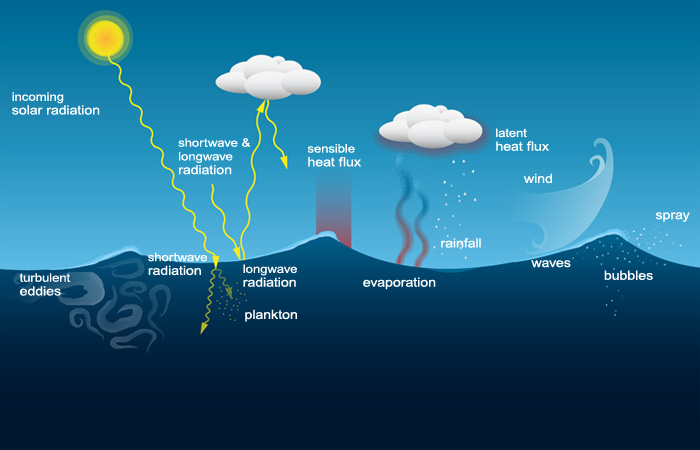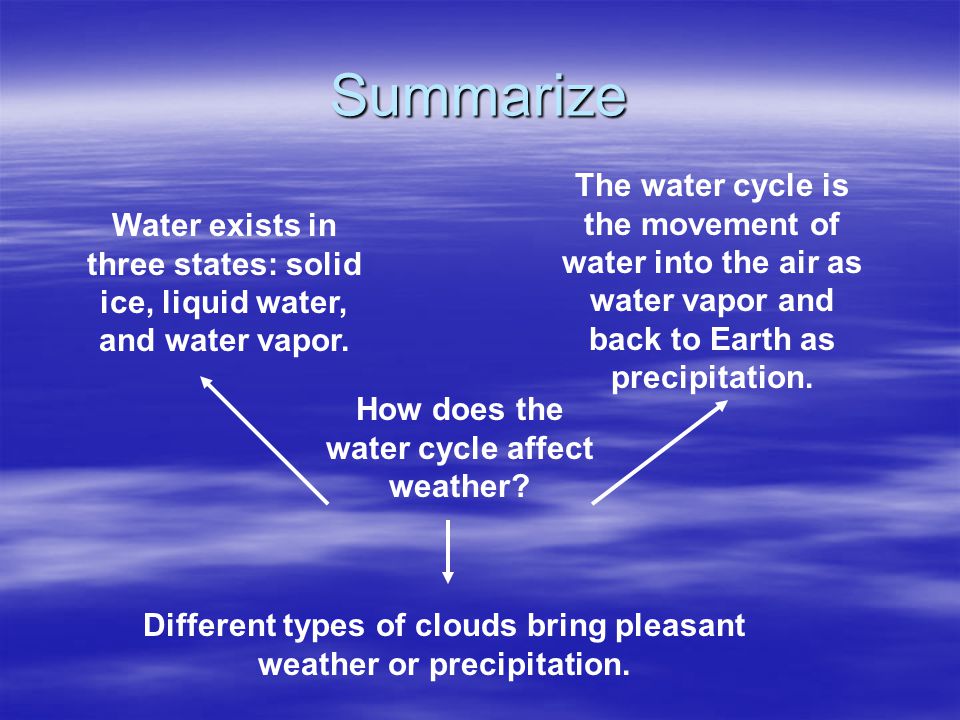Stored water as part of the water cycle. The water cycle describes how water moves above, on, and through the Earth. But, in fact, much more water is “in storage” at any one time than is actually moving through the cycle.
Water cycle facts are very much related to the weather. During periods of colder climactic conditions (for instance, the last ice age) more glaciers and ice caps form, lessening the amount of water in other parts of the cycle.

Questions to Consider: Explain two reasons why a warming climate results in a more intense water cycle. How do changes in the water cycle impact i) the surface water of oceans in the subtropics ii) the surface water of oceans in tropical and polar regions.


The Ultimate Water Cycle Lesson Page. When one looks around at the world and sees all the water on the earth and watches all the rain that falls from the sky, it is easy to believe that there is a constant supply of water for us.
Water on our planet moves back and forth between the atmosphere and earth in the form of liquid (rain, condensation), solid (snow, ice), and gas (water vapor, evaporation).

Glossary of Water Resource Terms. A B C D E F G H I J K L M N O P Q R S T U V W X Y Z A abandoned water right a water right which was not put to beneficial use for a number of years, generally five to seven years.





The Water Cycle for colleges, from the USGS Water Science college.
Climate What is climate? Climate is the average weather usually taken over a 30-year time period for a particular region and time period.

Rivers must be dammed, which can affect the function of the river both upstream and downstream – lakes are usually formed from the water accumulating above the dam and a build-up of silt can occur, while the amount of water is reduced further downstream.
In this lesson, students build upon their previous investigations of water—and its different forms—by learning about the water cycle and its continuous flow around us. Students begin by reviewing what they already know about water and how it can freeze into ice or turn into a gas depending on